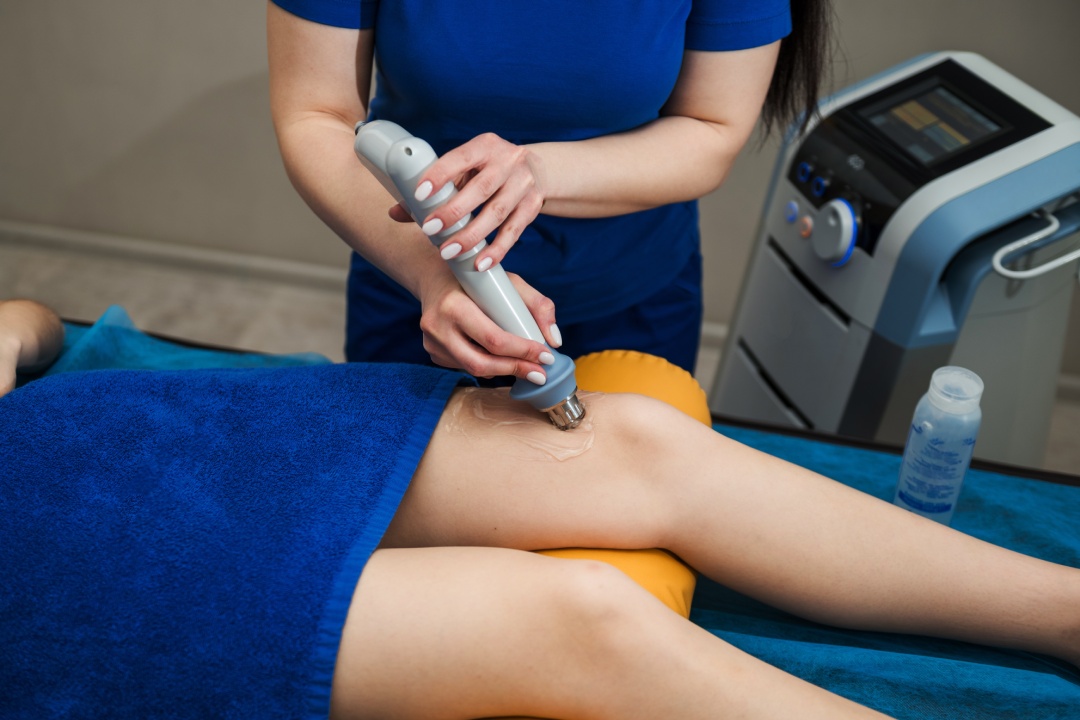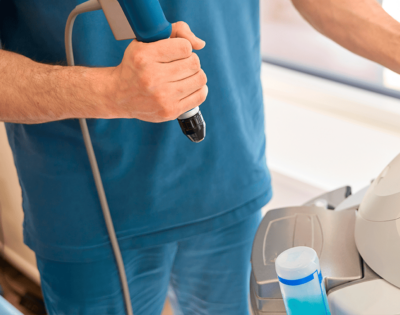Shockwave therapy is an innovative, noninvasive treatment designed to address chronic pain and heal sports injuries fast and efficiently. It is also known as Extracorporeal Shockwave Therapy (ESWT) or Rapid Pressure Wave (RPW) Therapy. This therapy involves applying low-energy acoustic wave pulsations directly to the affected tissues through the skin. These pulses prompt the body’s natural healing mechanisms, leading to various beneficial effects such as cellular changes, improved blood circulation, reduced muscle tone, and decreased pain levels.
Shockwave therapy provides a non-surgical alternative that can yield significant improvements, often within just a few sessions, offering hope for patients who have not found relief through other treatments.
Mechanisms and Benefits of Shockwave Therapy

Shockwave therapy leverages high-energy acoustic waves to stimulate the body’s natural healing processes. These waves penetrate deep into the affected tissues, enhancing blood flow and metabolic activity and promoting tissue regeneration.
Common Conditions Treated with Shockwave Therapy

Shockwave therapy has proven to be effective for the following musculoskeletal conditions:
- Calcific tendinopathy is effectively treated with Shockwave therapy. With this condition, calcium deposits cause chronic pain and inflammation in tendons. Shockwave therapy breaks down calcifications within the tendon, promoting reabsorption and reducing pain. It also stimulates collagen production and improves tendon function.
- Shockwave therapy benefits various types of tendonitis. It increases blood circulation, reduces inflammation, and promotes healing by stimulating the body’s natural processes.
- Achilles Tendinopathy: Shockwave therapy applied to the Achilles tendon increases collagen production, reduces pain, and accelerates tissue repair. Chronic inflammation is relieved, and tendon function is improved.
- Knee Injuries: Shockwave therapy can treat chronic knee pain by promoting the healing of damaged tissues, reducing inflammation, and improving function.
- Jumper’s knee, frequently seen in athletes, reacts exceptionally well to Shockwave therapy. The increased blood flow and collagen production stimulated by Shockwave therapy to the patellar tendon relieve pain and promote tissue healing.
- Patella Tendinopathy, similar to jumper’s knee, benefits similarly with increased blood flow to stimulate tissue repair and reduce chronic pain and inflammation in the patellar tendon.
- Shoulder Tendinopathy proves extremely beneficial with this therapy, which alleviates chronic shoulder tendinopathy by promoting collagen synthesis, reducing inflammation, and improving tendon elasticity.
- Rotator Cuff injuries are treated successfully with this therapy. The acoustic waves reduce inflammation, promoting increased blood flow and breaking down calcifications in the shoulder. The regeneration of damaged tendons is promoted.
- Frozen shoulder (Adhesive Capsulitis) benefits from Shockwave therapy, which accelerates healing and improves range of motion by stimulating bone and soft tissue regeneration. The adhesions are broken down, and tissue repair is stimulated to improve the range of motion.
- Hip Injuries are treated through Shockwave therapy to reduce inflammation, promote tissue repair, and improve joint mobility.
- Myofascial Trigger Points are treated with Shockwave therapy by breaking down trigger points (knots in the muscles), improving blood circulation, and reducing muscle tension.
- Golfer’s Elbow (Medial Epicondylitis) is treated by targeting the damaged tendon issues in the elbow, stimulating blood flow, and promoting micro-tear repair. It also helps with pain and to break down calcifications if present.
- Tennis Elbow (Lateral Epicondylitis): Similar to the Golfer’s elbow, Shockwave therapy reduces pain, stimulates tissue regeneration, and promotes healing of the elbow’s extensor tendons.
- Hamstring injuries are treated with shockwave therapy, which promotes tissue repair, reduces scar tissue, and improves blood flow to the affected area, leading to fast recovery.
- Shin Splints: Shockwave therapy breaks down scar tissue and calcification associated with shin splints. The increased blood flow to the muscles and bones reduces inflammation and pain.
- Bursitis: Shockwave therapy reduces inflammation and pain in the bursa (fluid-filled sac) to accelerate healing.
- Greater Trochanteric Pain Syndrome: Shockwave therapy targets the inflamed tendons and bursae in the hip, reducing pain and promoting healing in cases of greater trochanteric pain syndrome.
- Plantar fasciitis: Shockwave therapy stimulates metabolic activity and blood flow in the plantar fasciitis. It reduces pain and inflammation and helps break down scar tissue and calcifications to improve elasticity.
- Stress Fractures: Shockwave therapy promotes bone healing in stress fractures by increasing blood flow to the affected area and stimulating the formation of new bone tissue.
Practical Considerations for Sports Injury

Sports injury Shockwave therapy typically requires 3-5 sessions for patients to experience significant improvement. Each session uses high-energy acoustic waves to stimulate healing, increase blood circulation, and reduce pain. The noninvasive nature of this treatment makes it an attractive alternative to surgery and corticosteroid injections, as it carries minimal side effects and can be tailored to individual pain tolerance.
The prospects for this therapy are promising, with ongoing research and technological advancements continually enhancing its efficacy. Its accessibility makes sports injury Shockwave therapy a valuable option for those seeking relief from chronic pain and injuries.
Discover how Shockwave can accelerate your recovery with advanced shockwave therapy. Don’t let injuries slow you down—take the first step towards a pain-free life. Learn more about our innovative treatment options today!





